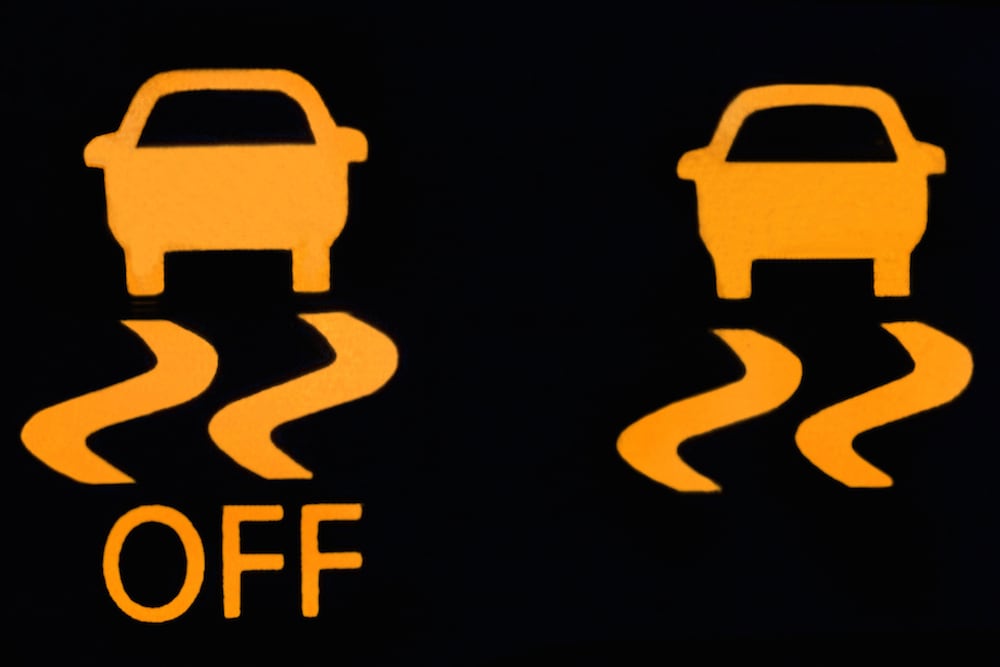
Is it safe to drive with the Traction Control (TCS) light on?
Content
The traction control indicator light indicates that your vehicle's traction control system is active. Traction control is essential to maintain traction on slippery roads.
The Traction Control System (TCS) helps the driver maintain control and vehicle stability if the vehicle loses traction and begins to skid or skid. The TCS automatically detects when a wheel is losing traction and can be activated automatically as soon as it is detected. Loss of traction most often occurs on ice or snow, so the TCS shifts power from a slippery wheel to wheels that still have good traction.
Your traction control system tells you it is working and not working when the TCS light comes on. If the light comes on when it should, it means it's safe to drive with the TCS indicator on; if it's not, that means it's not safe. Determine if it is safe to drive by understanding these 3 reasons why the TCS light may come on:
1. Temporary loss of traction
Some TCS indicators come on in rainy or snowy weather and then disappear. When this happens, it means that the system is activated due to road conditions with poor traction (ice, snow or rain) and helps the vehicle maintain traction. It may even flash briefly if you momentarily drive over a slippery spot on the road. TCS interference can be so subtle that you barely notice it. It is recommended that you read the owner's manual that came with your vehicle to make sure you know how your TCS system works and what to expect under these conditions.
Is it safe in this situation? Yes. The important thing to remember here is that the TCS indicator, which lights up and flashes rapidly when it is activated, means that the system is working properly. You should still drive with care on wet or slippery roads, but seeing the light under these circumstances indicates that your traction control system is working.
2. Faulty wheel speed sensor.
A set of wheel speed sensors on each wheel controls the TCS and ABS (anti-lock braking system) so your traction control computer knows if each wheel is rolling properly or slipping in some way. If the sensor detects slip, it will activate TCS to reduce power to the affected wheel to allow it to regain traction, causing the light to turn on for a short time.
A faulty wheel speed sensor, or damage to its wiring, disrupts communication between the wheel and the TCS computer. This prevents TCS from working on that wheel, so the light will come on and stay on until a decision is made. It may even turn on the "TCS off" indicator to indicate that the system is down.
Is it safe in this situation? No. If the light comes on and you clearly have traction, it's safe enough to drive to the spot to check the light. However, the mechanic should check the TCS as soon as possible. A lingering or flickering light usually means the TCS is not working. If you encounter adverse road conditions, the system will not work and you risk damage to your vehicle and yourself.
Note: Some vehicles allow you to manually turn off the traction control, in which case the "TCS Off" indicator will also light up. Only experienced drivers should do this at their own risk.
3. TCS computer failure
Controlling the actual system, the TCS computer plays a vital role in the proper functioning of the traction control system. The entire system may shut down in the event of contact corrosion, water damage, or a malfunction. This will activate the TCS indicator and possibly also the ABS indicator.
Is it safe in this situation? No. Similar to a faulty wheel speed sensor, a faulty TCS computer prevents the use of wheel traction information. The system will not turn on when needed. Again, drive carefully to a location where service can be requested and performed.
Is it safe to drive with the TCS light on?
Driving with the TCS light on is only safe if it comes on when you lose traction: this means the system is on. Driving without traction control can cause your vehicle to skid and skid on the road. It is best to keep your TCS up and running in case of dangerous weather. This allows you to always maintain control of the vehicle.
Driving with the TCS indicator on can be dangerous. You increase the likelihood of losing control of the vehicle. TCS helps control your vehicle's stability and traction, so your vehicle may not handle slippery roads properly without it. If the TCS indicator stays on, the safest course of action is to have a certified mechanic check the system and replace the TCS module if necessary.